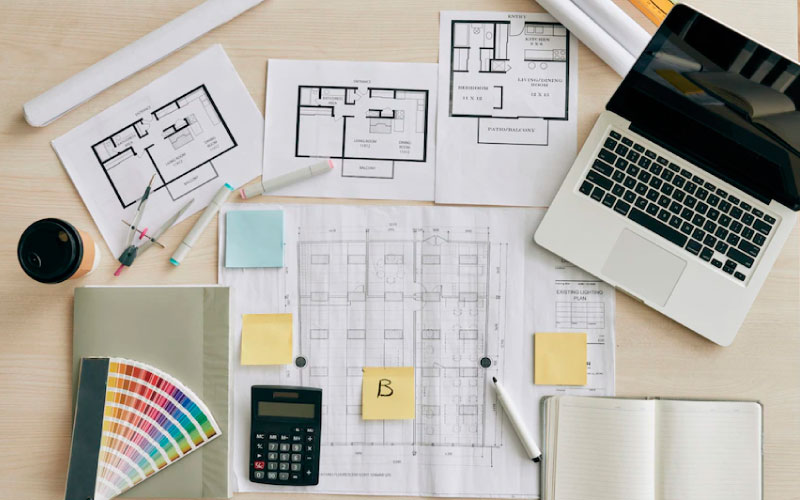Being an interior designer isn’t just about creating beautiful spaces; it’s about balancing creativity with practicality and client expectations. As someone who’s been in this profession for several years, I can tell you—no two days are the same. In this article, I will take you through a typical day in my life, share my experiences, and provide insights into what it truly means to be an interior designer.
What Does an Interior Designer Do?
Before diving into a typical day, let’s briefly explore what an interior designer does. A successful interior designer combines aesthetics with functionality to create spaces that meet their client’s needs. This involves:
- Consulting with clients to determine their preferences and requirements.
- Creating design plans and mood boards.
- Selecting materials, furniture, and decor elements.
- Collaborating with contractors and other professionals.
- Overseeing the implementation of design plans.
The Morning Routine: Starting the Day Right
Early Wake-Up and Inspiration
My day usually starts around 6:30 AM. The quiet morning hours are my favorite time to gather inspiration. I often browse through design magazines, Pinterest boards, or even take a leisurely walk in my neighborhood to observe architectural styles and color palettes that catch my eye.

Planning the Day Ahead
By 7:30 AM, I sit down with my planner, reviewing appointments, deadlines, and project statuses. This organized approach helps me prioritize tasks effectively. Here’s a quick look at how I typically structure my day:
| Time | Activity |
|---|---|
| 6:30 AM | Wake up, gather inspiration |
| 7:30 AM | Plan the day |
| 8:30 AM | Client meetings / site visits |
| 12:00 PM | Lunch break |
| 1:00 PM | Design work / mood boards |
| 4:00 PM | Collaboration with contractors |
| 6:00 PM | Wrap up tasks / plan for tomorrow |

Client Meetings: Understanding Needs and Building Relationships
The Importance of Listening
Every client is unique, and understanding their vision is crucial. During meetings, I take detailed notes and often sketch ideas based on their preferences. This initial consultation is often where the magic begins, as clients start to see how their vision can become a reality.

Creating Mood Boards
After our meeting, I spend time creating mood boards that encapsulate the client’s style. This visual representation allows clients to see colors, textures, and furniture options together. It’s not just about aesthetics; it’s about ensuring the space reflects their personality.
Afternoon Design Work: Bringing Ideas to Life

Drafting Floor Plans
Once the mood board is approved, I move on to drafting floor plans. Utilizing design software allows me to create accurate layouts. It’s essential to ensure that furniture placement optimizes space and functionality. Here’s a simple comparison of the software tools I use:
| Software | Pros | Cons |
|---|---|---|
| AutoCAD | Highly detailed, industry-standard | Steep learning curve |
| SketchUp | User-friendly, great 3D visuals | Limited functionality for advanced projects |
| Chief Architect | Comprehensive design features | Expensive subscription fees |

Client Communication and Feedback
After drafting plans, it’s crucial to present them to the client. I often conduct virtual meetings to save time. Feedback is invaluable, as it helps refine the design further. This collaboration fosters a sense of ownership with the client, making them feel involved in the process.
Collaboration with Contractors: The Implementation Phase

Project Coordination
Once the design is finalized, I coordinate with contractors. This phase includes selecting materials and ensuring everyone is on the same page. Regular site visits help to ensure the project is progressing according to schedule. It’s rewarding to see the designs come to life, albeit sometimes it comes with challenges.
Pros and Cons of Working with Contractors
Working with contractors has its perks and drawbacks. Here’s a quick list:
- Pros:
- Expertise in construction and implementation.
- Efficient project management.
- Access to reliable resources and contacts.
- Cons:
- Potential communication barriers.
- Variability in quality of work.
- Delays due to unforeseen circumstances.
The Evening Wrap-Up: Reflection and Preparation for Tomorrow
Final Tasks and Planning
As the day winds down, I take a moment to reflect on the day’s accomplishments. I check off completed tasks and jot down notes on what remains for tomorrow. This reflection helps me stay organized and ensures I’m always moving forward.
Continued Education
The interior design field constantly evolves with trends and technologies. I allocate some evening time to read industry blogs, watch webinars, or join local design community events. Staying updated is crucial for providing clients with the best possible service.
Frequently Asked Questions about Interior Designers
What skills are essential for an interior designer?
Key skills include creativity, communication, project management, and an understanding of architecture and design principles.
How long does it take to become an interior designer?
Typically, it takes about four years to earn a degree in interior design, followed by gaining practical experience through internships.
What are some challenges faced by interior designers?
Common challenges include managing client expectations, navigating complex projects, and staying updated with industry trends.
How can I become a successful interior designer?
Success in this field requires continuous learning, strong networking skills, and a passion for design. Building a robust portfolio is also essential.
Conclusion: Embracing the Joys and Challenges of Interior Design
A day in the life of an interior designer is a blend of creativity, organization, and client interaction. From early morning inspiration to evening reflections, every part of the process is rewarding. Despite the challenges, the ability to transform a space and create a tangible impact on someone’s life is what keeps me passionate about this profession. If you’re considering a career in interior design, remember, each day will bring new learning opportunities and the joy of bringing dreams to reality.